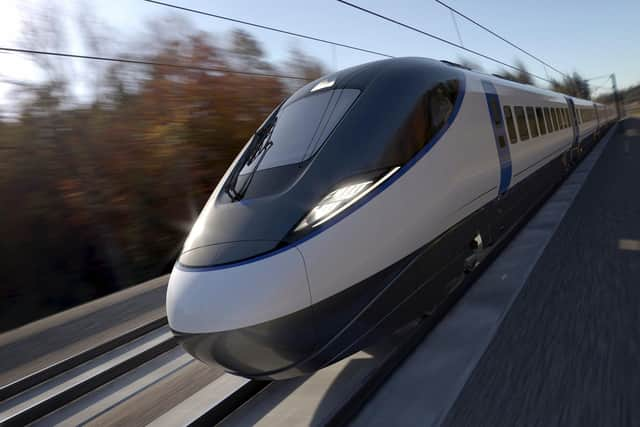Chopping and changing projects like HS2 cost money and risk Britain falling behind - Henri Murison
It feels like a very long time ago. In that time we’ve had two more prime ministers, five chancellors and countless transport secretaries and rail ministers.
We’ve also seen a series of changes to the route. The biggest blow came in November 2021, when the government confirmed our worst fears by axing critical sections of the Eastern Leg of HS2 and lopping off almost all of the promised Northern Powerhouse Rail new track in Yorkshire - vital to connect Manchester with Bradford, Leeds and beyond. In the latest episode of the saga, a report emerged the other week that HS2 would terminate in Old Oak Common in suburban London, rather than Euston as originally planned.
Advertisement
Hide AdAdvertisement
Hide AdIt didn’t take long for the Chancellor to dismiss the rumour – it was, after all, a completely nonsensical plan. For one thing, Old Oak Common simply does not have enough platforms to deliver a full service between London and Manchester, never mind to Leeds and further on.


The changes which have been made in recent years aren’t just a headache for transport planners, it’s hugely expensive – particularly when it comes to redesigning stations.
It’s also worryingly symptomatic of the UK’s wider problem with ambitious infrastructure investment as a whole, especially for projects outside London and the South East. In recent decades, the UK has fallen into a bad habit: detractors demand sections be chopped off to save money, those changes require new designs which, in turn, drive up the cost of the surviving bits of route.
The uncertainty deters investment and development. Worst of all, it makes those remaining sections far less economically transformative. When we whittle down major infrastructure projects, we end up with a pale imitation of the original vision which does not deliver the productivity transformation we were promised and, ironically, is less good value for money.
Advertisement
Hide AdAdvertisement
Hide AdThe original benefit-cost ratios for HS2 heavily relied on traditional transport economic modelling, which has a narrow focus on journey time savings. What they didn’t ever do was analyse the effect of delivering a real, properly connected Northern Powerhouse.


Our research commissioned ahead of the Oakervee Review took into account the multiplier benefits of boosting rail services across the North and building HS2 in full alongside investing in skills, education and extensive devolution. It could unlock a £1trillion jackpot and create almost a million more jobs within the coming three decades.
After all, this was never about shaving a few minutes off the time to London. The main case for HS2 has always been about capacity.
The lack of capacity on our rail network is a blight on our economy. HS2 unlocks capacity for the whole country, not just the cities along its route, which is vital for delivering efficient, reliable passenger and freight services. The next time you’re stuck behind a queue of articulated lorries on the motorway, remember that the freight could be transported far more quickly, not to mention in a far more eco-friendly way, if we put it onto rail instead. So, while these projects do cost a lot, that money doesn’t go up in a puff of smoke. It goes into building a transport network that’s fit for the 21st century, bringing us closer to net zero and boosting productivity – meaning that projects like HS2 end up paying for themselves many times over.
Advertisement
Hide AdAdvertisement
Hide AdAnd let’s not forget that those big numbers are spread out across decades. In the year to April 2022, the government spent £5.4bn on HS2. We spent nearly ten times as much (£53.5bn) in interest payments on national debt.
There are also sensible ways we can find savings. For example, we can lease rather than buy the new trains, enabling us to address inflation in industry wide construction costs whilst keeping up the pace of completing Phase One between London and Birmingham.
Lastly, I promise that we will keep fighting tooth and nail to make sure that this region doesn’t miss out.
Bringing high-speed services to Sheffield and Leeds would create 50,000 jobs, support 8,000 new homes and deliver a £54bn boost to the local economy – but we’re still yet to see the long-awaited Leeds review on how to make that happen.
Advertisement
Hide AdAdvertisement
Hide AdThe good news is that Rail Minister Huw Merriman, a trusted and credible voice on this issue, has said he plans to meet leaders in Bradford and Leeds in the coming weeks to discuss options.
While we dither, France, Germany, Spain, Italy and many more of our competitors are investing billions in their own networks.
I hope we don’t get left behind.
Henri Murison is chief executive of the Northern Powerhouse Partnership (NPP).